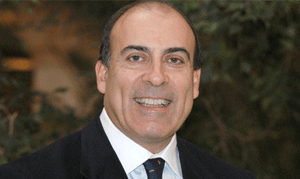Coca-Cola Profit Tops Estimates After Higher Pricing
 Coca-Cola Co. (KO), the world’s largest soft-drink maker, reported second-quarter profit that topped analysts’ estimates, helped by pricing increases in North America late last year. Net income was little changed at $2.79 billion, or $1.21 a share, compared with $2.8 billion, or $1.20, a year earlier, Atlanta-based Coca-Cola said today in a statement. Excluding some items, profit totaled $1.22 a share. Analysts projected $1.19, the average of 14 estimates compiled by Bloomberg.
Coca-Cola Co. (KO), the world’s largest soft-drink maker, reported second-quarter profit that topped analysts’ estimates, helped by pricing increases in North America late last year. Net income was little changed at $2.79 billion, or $1.21 a share, compared with $2.8 billion, or $1.20, a year earlier, Atlanta-based Coca-Cola said today in a statement. Excluding some items, profit totaled $1.22 a share. Analysts projected $1.19, the average of 14 estimates compiled by Bloomberg.Chief Executive Officer Muhtar Kent raised pricing last year to help recoup higher costs for ingredients such as sweeteners and plastic for bottles. Pricing rose 3 percent in the second quarter, helped by a 5 percent jump in soft drink pricing in North America.
“Coca-Cola delivered another solid and better-than- expected quarter in an increasingly challenging macro environment,” Bonnie Herzog, an analyst with Wells Fargo & Co., said today in a research note. The results are “confirmation of KO’s durability.” She rates the shares outperform, the equivalent of a buy.
Coca-Cola rose 1.6 percent to $77.69 at the close in New York. The shares have gained 11 percent this year.
Commodity costs this year may increase about $300 million from 2011, less than the $350 million to $450 million Coca-Cola had forecast in February. The recent jump in corn futures has been factored into the company’s full-year commodity guidance, Kent said today in an interview.
“Corn is not our only commodity, it’s a combination of coffee and PET and metals and oils and everything else,” Kent said, refering to polyethylene terephthalate, the plastic used in bottles.
Gross Margin
Revenue in the quarter advanced 2.7 percent to $13.1 billion, according to the statement. The volume of drinks sold globally increased 4 percent, including a 1 percent gain in North America. Volume sales in China rose 7 percent while Europe declined 4 percent.
“In Europe, the consumer is pretty confused,” Kent said. “Less people traveling overall, less people eating out, less people driving, less people spending and that’s Europe.”
Gross margin softened in May and June and the trend will continue through the year, Chief Financial Officer Gary Fayard said today during a conference call. The U.S. dollar’s strength against other currencies reduced the value of some sales and shifts in consumer spending to lower-margin products are also to blame, he said.
“Overall, in Europe, USA, and Western economies particularly, we’re going to see a protracted recovery,” Kent said in the interview. “The U.S. will come out of this first and better.”
Last modified onSaturday, 06 May 2017 10:07
Latest from Admin TOA
- The Young Star of the Gastronomy World Is The New Owner of Samdan
- From Dream to Reality, from Muş to Illinois: Zellano Home, the Largest Furniture Store Under One Roof in the USA!
- 300 migrants to be housed at shuttered Catholic church on Northwest Side in Chicago
- Turkish Philanthropy Funds Hosts 2024 Innovation and Social Impact Summit
- Turkish Stand-Up Sensation Hasan Can Kaya Embarks on U.S. Tour with Art Evi Production, in212 Production, and TAAS New York
